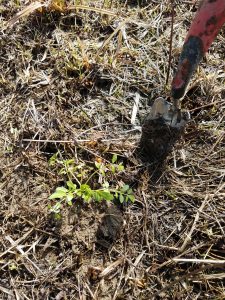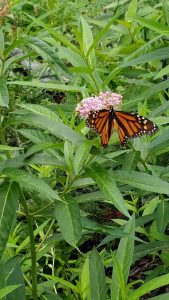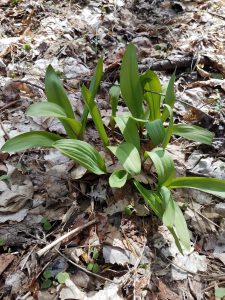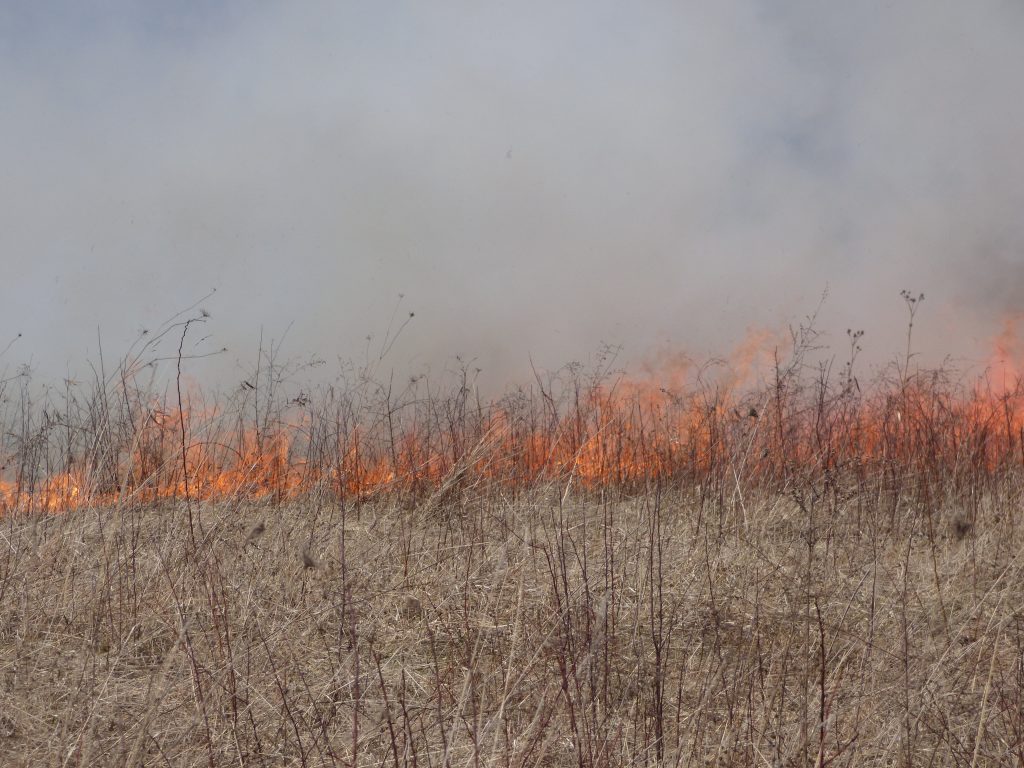 Earth Day, celebrated on April 22 each year, is a day to focus on protecting Mother Earth – the planet we inhabit that helps to sustain human life. To honor Earth Day 2018 Orchid Asana participated in a Seva project at Crown Point Ecology Center in Bath, Ohio. Seva is a Sanskrit word meaning selfless service – there is no expectation of reward for performing it.
Earth Day, celebrated on April 22 each year, is a day to focus on protecting Mother Earth – the planet we inhabit that helps to sustain human life. To honor Earth Day 2018 Orchid Asana participated in a Seva project at Crown Point Ecology Center in Bath, Ohio. Seva is a Sanskrit word meaning selfless service – there is no expectation of reward for performing it.
The Ecological Restoration project, led by Marc Amante, focused on two areas at Crown Point: the prairie and the woods. We began working in the prairie area where the Center did a controlled burn last week. These periodic fires help to control weeds, rejuvenate growth, and restore nutrients back into the soil. To restore the area we planted native prairie plants and spread seeds. Native plants are important because they help to support a region’s ecosystem. Without them, bird, insect, and animal populations can be negatively impacted due to the disappearance of their food source.
Consider the relationship between milkweed, a native plant, and monarch butterflies. Milkweed is essential to the survival of monarchs – it is the sole food source for the caterpillars. As milkweed plants diminish in number, there is less food available for the caterpillars resulting in fewer monarch butterflies. The reduction of Monarchs negatively impacts ecosystem because they help pollinate flowers as well as serve as a food for birds, small animals and other insects.
is essential to the survival of monarchs – it is the sole food source for the caterpillars. As milkweed plants diminish in number, there is less food available for the caterpillars resulting in fewer monarch butterflies. The reduction of Monarchs negatively impacts ecosystem because they help pollinate flowers as well as serve as a food for birds, small animals and other insects.
Next we moved to the woods to learn about invasive plant species. One of the most common invasive plants in Northeast Ohio is Japanese Honeysuckle. This plant is native to Eastern Asia and was brought to America as an ornamental plant. There is no denying that it is beautiful when it is in bloom. However, it spreads rapidly and is difficult to control. Due to this it crowds out the native species our ecosystem is dependent on. Marc showed us three things to look for to help identify Japanese Honeysuckle in our region: the leaves start appearing before those on native plants, leaves sprout opposite each other as opposed to alternate, when you break a branch it is hollow inside. After learning to identify the plant we used long handle garden shears to cut the bushes back as close to the ground as possible.

The day concluded with Marc teaching us more about our woodland area. He pointed out Ash trees and told us about the emerald ash borer. This non-native insect feeds on the inner bark of ash trees and is causing the death of many trees. One of the most important things to do in order to help stop the spread of the insect is to not transport firewood outside of your local area. Additionally, he pointed out some edible native ramps and garlic chives. While ramps can be harvested to eat, he emphasized conscious picking to help conserve the plants. If there is only a small group of ramps, let them be so they can continue to grow and spread.
Taking care of our planet is important to do. Not only does it help sustain humans, but plants, animals, and insects are dependent on Mother Earth’s health too. However, the planet is big and it’s easy to feel overwhelmed thinking about how we can take care of all of it. All of us can take a moment and think on a smaller scale – what can I do to help in my little corner of the planet. We can take advantage of recycling programs; we can pick up trash in our neighborhoods; we can reduce our plastic use – especially single use water bottles; we can plant and care for native species of plants. If everyone did a little something in their own native habitat, we would collectively be taking care of our planet.


Excellent web site. Plenty of helpful information here. I am sending it to some friends ans also sharing in delicious. And naturally, thank you in your sweat!
Thank you!
Woo Hoo – thanks for helping clean up Mother Earth! Keep it going and make every day Earth Day!
Happy Earth Day!